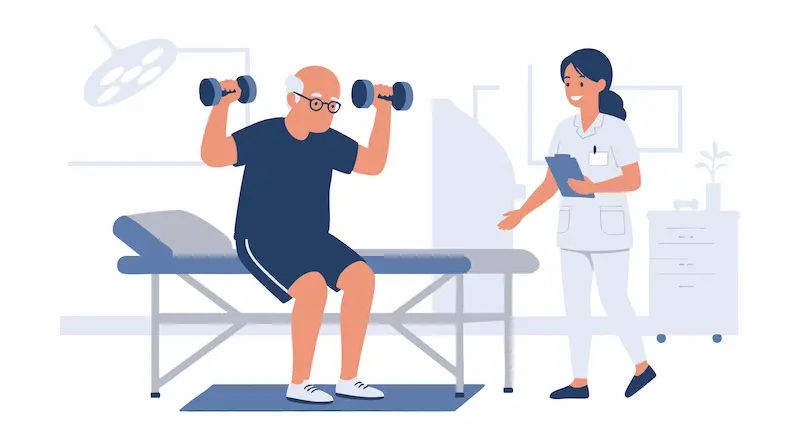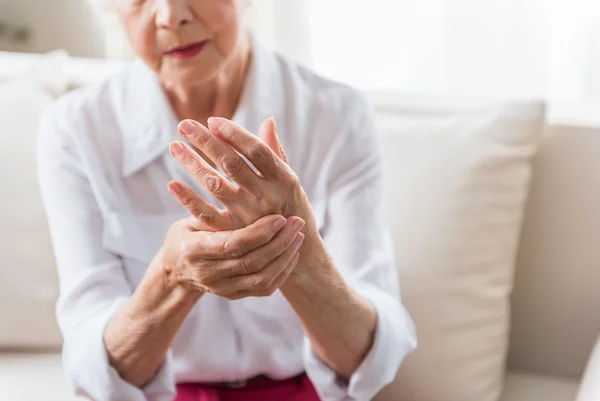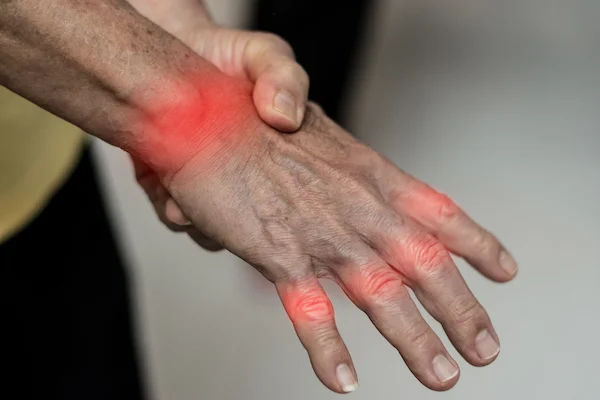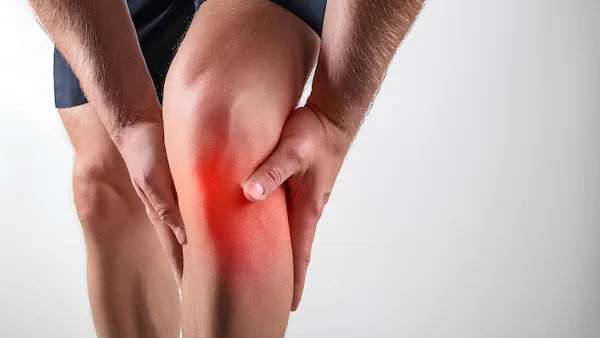Guide to Saving Yourself from Arthritis Pain
Discover how to save yourself from arthritis pain with proactive prevention, early warning signs, diet, exercise, and modern treatments for healthier joints.


Introduction
Are you dismissing that occasional knee stiffness or morning finger ache as just a sign of getting older? You’re not alone. Arthritis is often misunderstood as an inevitable part of aging, but it’s not a fate you have to accept passively. Think of your joints not as ticking time bombs, but as high-performance machinery that thrives on proper care. This guide flips the script from managing symptoms to actively empowering you to protect your joints. We’ll move beyond basic advice to explore the science of joint health, unpack the different types of arthritis, and provide an actionable, step-by-step plan rooted in prevention. Whether you have a family history, want to safeguard your future mobility, or are seeking to manage early signs, this comprehensive resource will equip you with the knowledge to take control, reduce inflammation, and save yourself from a future dominated by joint pain. Let’s begin by understanding what we’re truly dealing with.
What Exactly Is Arthritis? It's More Than Just Aches and Pains
The term "arthritis" is a blanket term for over 100 conditions that affect the joints, the tissues surrounding the joint, and other connective tissues. It’s characterised primarily by joint pain, stiffness, and swelling. The common misconception is that it's a single disease; in reality, different types have different causes and treatments. Understanding which type you might be at risk for is the first step in targeted prevention.
Osteoarthritis: The Wear-and-Tear Type
Osteoarthritis (OA) is the most prevalent form, often described as "wear-and-tear" arthritis. It occurs when the protective cartilage that cushions the ends of your bones wears down over time. This cartilage doesn't have a blood supply, so once it's damaged, the body struggles to repair it. This leads to pain, swelling, and bone spurs. It most commonly affects joints in the hands, knees, hips, and spine. While age is a primary factor, it's not just about getting older—it's about the cumulative stress on a joint. This is why modifiable factors like weight and injury prevention are so crucial in saving yourself from OA.
Rheumatoid Arthritis: When Your Body Attacks Itself
Rheumatoid Arthritis (RA) is an autoimmune and inflammatory disease. Here, the body's immune system mistakenly attacks its own tissues, primarily the synovium—the lining of the membranes that surround your joints. This attack causes a painful swelling that can eventually lead to bone erosion and joint deformity. RA often affects smaller joints first, like those in the hands and feet, and is typically symmetrical (affecting both sides of the body). Unlike OA, RA involves systemic inflammation, meaning it can affect other body systems like the heart, lungs, and eyes. Early intervention is critical to slow its progression.
Other Common Forms: Gout and Psoriatic Arthritis
Two other notable types are Gout and Psoriatic Arthritis. Gout is characterised by sudden, severe attacks of pain, redness, and tenderness in joints, often at the base of the big toe. It's caused by elevated levels of uric acid in the blood, which form needle-like crystals in a joint. Psoriatic Arthritis affects some people with the skin condition psoriasis. It can cause swollen, painful joints and lead to stiffness and progressive joint damage. Recognising the unique symptoms of these types is key to getting the right diagnosis and treatment plan.
Health topic carousel:
Doctor's speciality: Rheumatologist
Text: Consult a Rheumatologist for the best advice
Early Warning Signs: Listening to Your Body's Signals
Your body often sends subtle signals long before joint damage becomes significant. Heeding these early signs of arthritis is your greatest weapon in proactive prevention.
Joint Pain and Stiffness You Shouldn't Ignore
Pain is the most common signal. It might be a constant ache or a sharp pain when you use the joint. Stiffness is another hallmark, particularly morning stiffness that lasts for more than 30 minutes and improves with movement. This is a classic sign of inflammatory arthritis like RA. Don’t brush off pain that appears during or after activity or stiffness that makes it hard to start your day.
Swelling, Redness, and Reduced Range of Motion
Inflammation often manifests as visible swelling, warmth, or redness around a joint. This is your body's response to irritation. You might also notice that you can’t move the joint through its full range of motion anymore. For example, you may not be able to fully bend your knee or make a tight fist. This loss of mobility is a direct result of swelling, pain, or structural damage within the joint.
The Root Causes: Why Arthritis Develops
Understanding the causes helps you identify your personal risk profile and where to focus your prevention efforts.
Non-Modifiable Risk Factors: Age, Gender, and Genetics
Some factors are beyond our control. The risk of osteoarthritis increases significantly after age 45. Rheumatoid arthritis is more common in women, while gout is more common in men. Family history also plays a role; specific genes can make you more susceptible to certain types of arthritis. However, genetics load the gun, but lifestyle often pulls the trigger.
Modifiable Risk Factors: The Keys to Prevention
This is where you have immense power. Obesity is a major contributor to OA, particularly in weight-bearing joints like hips and knees. Every extra pound puts nearly four pounds of extra pressure on your knees. Previous joint injuries, even those that happened years ago, can predispose a joint to OA. Occupation plays a role too; jobs with repetitive knee bending and squatting are high-risk. Finally, infections can trigger certain types of arthritis in people with a predisposing genetic makeup.
Your First Line of Defense: Proactive Lifestyle Changes
This is the core of the "save yourself" philosophy. Integrating these changes can dramatically reduce your risk and severity of arthritis.
Fueling Your Joints: An Anti-Inflammatory Diet Plan
What you eat directly influences inflammation levels. An anti-inflammatory diet for joint pain is rich in:
Omega-3 Fatty Acids: Found in fatty fish (salmon, mackerel), walnuts, and flaxseeds. They produce compounds that help reduce inflammation.
Colorful Fruits and Vegetables: Packed with antioxidants that combat cellular stress and inflammation. Berries, leafy greens, and broccoli are superstars.
Whole Grains and Healthy Fats: Foods like olive oil and nuts contain compounds that have anti-inflammatory properties.
Limit: Processed foods, sugary drinks, refined carbohydrates, and excessive red meat, which can promote inflammation.
Movement is Medicine: The Best Exercises for Joint Health
Contrary to instinct, movement protects joints. Exercise strengthens the muscles around joints, acting as shock absorbers and stabilisers. It also nourishes cartilage by stimulating the production of synovial fluid. The best exercise for knee arthritis and other joints is low-impact:
Swimming and Water Aerobics: The buoyancy of water supports your weight while providing resistance.
Cycling: Stationary or outdoor biking builds leg strength with minimal joint stress.
Walking: A simple, effective way to stay active.
Tai Chi and Yoga: Improve balance, flexibility, and range of motion.
Weight Management: Why Every Pound Counts
If you are overweight, weight loss helps arthritis symptoms more than almost any other intervention. Losing just 10 pounds can reduce the pressure on your knees by 40 pounds with every step. It’s one of the most powerful ways to slow the progression of OA and reduce pain.
Beyond Diet and Exercise: Holistic Management Techniques
True prevention extends into all aspects of your life.
Stress Reduction and Quality Sleep's Role in Inflammation
Chronic stress elevates cortisol levels, which can exacerbate systemic inflammation. Practices like meditation, deep breathing, and mindfulness can help manage this. Furthermore, poor sleep quality is linked to increased pain sensitivity and inflammation. Prioritising 7-9 hours of quality sleep is a non-negotiable part of joint health.
Protecting Your Joints from Injury in Daily Life
Use your body wisely. Lift with your legs, not your back. Use ergonomic tools at work and home. Take breaks from repetitive tasks. Wear supportive shoes. Protecting your joints from acute and repetitive stress is a lifelong investment.
When to Seek Professional Help: Diagnosis and Treatment
While prevention is key, professional guidance is essential if symptoms arise.
How Doctors Diagnose Different Types of Arthritis
Diagnosis typically involves a physical exam, where a doctor checks for swelling, redness, and warmth. They will assess your range of motion. Imaging tests like X-rays and MRIs can reveal cartilage loss and bone damage. Blood tests can check for biomarkers like rheumatoid factor (RF) and anti-CCP antibodies for RA, or elevated uric acid for gout. If symptoms like persistent joint pain, swelling, and stiffness last beyond two weeks, consult a doctor online with Apollo24|7 for further evaluation. They can guide you on the next steps, which may include lab tests. Apollo24|7 offers a convenient home collection for tests like ESR (erythrocyte sedimentation rate) or CRP (C-reactive protein) which help measure inflammation.
Health topic carousel:
Lab Test: X-ray, MRI, and Blood Tests
Text: Get Your Health Assessed
Modern Treatment Options: From PT to Advanced Medications
Treatment aims to control pain, minimise joint damage, and improve function. It often includes:
Physical Therapy: A cornerstone of treatment, PT teaches exercises to preserve and improve strength and range of motion.
Medications: From over-the-counter NSAIDs (ibuprofen) to prescription DMARDs and biologics for RA that target specific parts of the immune system.
Injections: Cortisone shots can reduce inflammation in a specific joint, and hyaluronic acid injections can cushion knees affected by OA.
Surgery: Options like joint repair, fusion, or replacement (arthroplasty) are considered when conservative treatments fail.
Conclusion
Saving yourself from arthritis isn't about finding a magic pill; it's about embracing a proactive, holistic lifestyle that prioritises your joint health every single day. It’s the cumulative effect of countless small choices—choosing the stairs, adding leafy greens to your plate, managing stress, and listening to the subtle signals your body sends. This guide has equipped you with the knowledge to understand the different types of arthritis, recognise the early warning signs, and, most importantly, implement powerful preventative strategies. Remember, you have significant agency over your joint health. By taking control of modifiable risk factors today, you are actively investing in a future of greater mobility, less pain, and continued independence. Start with one change, build upon it, and commit to protecting the joints that carry you through life.
Health topic carousel:
Doctor's speciality: Rheumatologist
Text: Consult a Rheumatologist for the best advice
FAQs About Preventing and Managing Arthritis
1. Can certain foods really make arthritis worse?
A. Yes. For inflammatory arthritis like RA, foods that promote systemic inflammation—such as processed foods, high-sugar items, and saturated fats—can potentially worsen symptoms. For gout, foods high in purines (red meat, organ meats, some seafood) and alcohol can trigger attacks by raising uric acid levels.
2. Is cracking your knuckles a sure way to get arthritis?
A. No, the prevailing scientific evidence suggests that knuckle cracking does not cause arthritis. The sound is caused by the bursting of gas bubbles in the synovial fluid. However, it can sometimes lead to reduced grip strength or hand swelling.
3. What's the single best exercise for someone with arthritis?
A. There's no single "best" exercise as it depends on the affected joints. However, swimming and water aerobics are often highly recommended because the water supports body weight, allowing for movement with minimal joint impact, making them excellent low-impact exercises for joint pain.
4. How does weather affect arthritis pain?
A. While not universal, many people report increased joint pain with changes in barometric pressure (often before rain or cold weather). One theory is that dropping pressure causes tissues to expand, putting pressure on nerves in already-sensitive joints.
5. Can you reverse arthritis damage?
A. Currently, there is no cure to reverse the cartilage loss of osteoarthritis. The goal of treatment is to manage pain, improve function, and slow progression. For autoimmune types like RA, early and aggressive treatment with modern medications can lead to remission, preventing further damage.
Consult Top Specialists for Personalised Tips

Dr. Anand Ravi
General Physician
2 Years • MBBS
Bengaluru
PRESTIGE SHANTHINIKETAN - SOCIETY CLINIC, Bengaluru
Dr Ankit Patowari
Rheumatologist
6 Years • MBBS, MD MEDICINE, DM RHEUMATOLOGY
Guwahati
Apollo Clinic Guwahati, Assam, Guwahati

Dr. Zulkarnain
General Physician
2 Years • MBBS, PGDM, FFM
Bengaluru
PRESTIGE SHANTHINIKETAN - SOCIETY CLINIC, Bengaluru

Dr. Brig K Shanmuganandan
Rheumatologist
20 Years • MBBS, MD (Med.), DNB (Med.), Fellow (Rheuma.)
Chennai
Apollo Hospitals Greams Road, Chennai
(475+ Patients)

Dr. Kaushik V V
Rheumatologist
17 Years • MBBS, MRCP, CCT (GIM), CCT (Rheumatolgy), FRCP
Chennai
Apollo Hospitals Greams Road, Chennai
(125+ Patients)
Consult Top Specialists

Dr. Anand Ravi
General Physician
2 Years • MBBS
Bengaluru
PRESTIGE SHANTHINIKETAN - SOCIETY CLINIC, Bengaluru
Dr Ankit Patowari
Rheumatologist
6 Years • MBBS, MD MEDICINE, DM RHEUMATOLOGY
Guwahati
Apollo Clinic Guwahati, Assam, Guwahati

Dr. Zulkarnain
General Physician
2 Years • MBBS, PGDM, FFM
Bengaluru
PRESTIGE SHANTHINIKETAN - SOCIETY CLINIC, Bengaluru

Dr. Brig K Shanmuganandan
Rheumatologist
20 Years • MBBS, MD (Med.), DNB (Med.), Fellow (Rheuma.)
Chennai
Apollo Hospitals Greams Road, Chennai
(475+ Patients)

Dr. Kaushik V V
Rheumatologist
17 Years • MBBS, MRCP, CCT (GIM), CCT (Rheumatolgy), FRCP
Chennai
Apollo Hospitals Greams Road, Chennai
(125+ Patients)




